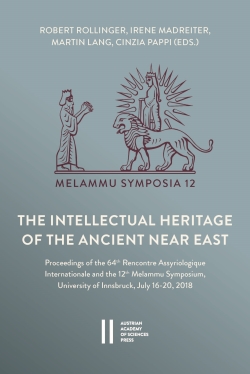
The Intellectual Heritage of the Ancient Near East, pp. 501-516, 2023/04/12
Proceedings of the 64th Rencontre Assyriologique Internationale and the 12th Melammu Symposium, University of Innsbruck, July 16‒20, 2018
Enūma eliš and the Priestly Narrative have often been compared. The former is a myth of creation dated to the 2nd millennium that strives to promote Marduk as the greatest god, while the latter, as it is now embedded into other strata in the Pentateuch, is usually dated around the exilic period (6th century BC); it promotes the one God Yahweh and runs from the creation of the world to the building of the sanctuary. Both writings thus present a similar trajectory from creation to the sanctuary. Though influences from the former over the latter are assumed, any dependence has not yet been demonstrated in a systematic way. In this contribution, main themes from both writings (creation, flood and sanctuary) will be compared in order to bring to light very similar scribal practices in both writings. These practices and different motifs may be considered shared knowledge that can only point to the time of Exile not just as a time of crisis but also as a time of intense learning when cultural transfers became possible and renewed intellectual and technical scribal practices in an extraordinary manner.